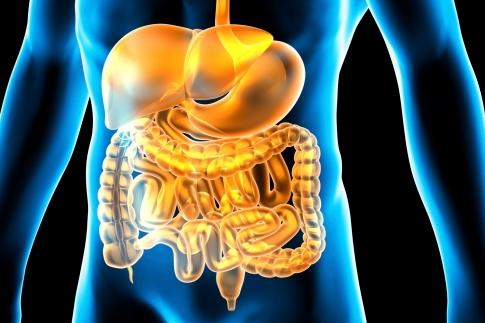News
January 16, 2015
By Nuritas
The treachery of our microbial friends

On Wednesday the 14th of January, we read an amazing article hypothesizing that gut microbes can switch into a virulent state in order to terminate the human host if they are seriously ill or elderly. We have reached out to one of the authors, Professor Viktor Müller, who kindly summarized this fascinating hypothesis for us.
(Summary of Rozsa et al, Biology Direct, 2015; by Viktor Müller) Please read the full publication here.
Humans are home to a diverse array of microbes that live on our skin, in our gut, nose and lungs, easily outnumbering the cells in our body. Some cause disease, but most of these tiny companions go unnoticed, and some of them even help us in many ways. These microbial friends break down sugars and other substances that our own enzymes are unable to process, in some cases producing essential nutrients that our body cannot manufacture. Their resilient community (the healthy “microbiome”) offers some protection against pathogenic viruses and bacteria, and their presence is needed to guide the development of our immune system. However, some of these normally harmless organisms have a darker side: reacting to environmental clues (within our body) they can switch on “virulence genes” and cause or contribute to disease. We are beginning to understand the molecular mechanisms of how they do it; however, we often lack the explanation of why they are doing it.
We are beginning to understand the molecular mechanisms of how they do it; however, we often lack the explanation of why they are doing it.
Now a peer-reviewed publication by Rozsa and colleagues offers a hypothesis that draws on an established principle of evolutionary biology. All of our microbes have evolved to maximize their transmission to other individuals (those that are most efficient at it can spread better and replace weaker competitors). Disease causing organisms use an exploitative strategy: they extract resources from their human host as fast as they can to quickly multiply, and they often cause symptoms, such as diarrhea or coughs, that help to transmit their offspring to other individuals. This strategy pays quick dividends but it is typically associated with a relatively short duration of infection: diseases can kill their hosts, or if that does not happen, the immune system tends to eliminate most infections within a few weeks. In contrast, “friendly” or neutral microbes invest in long-term partnership: they do not steal valuable resources and do not cause symptoms. As a consequence, they are less contagious, but they can persist, and be transmitted, for far longer periods: the human host remains healthy and our immune system has evolved to tolerate these long-time companions. The peaceful strategy is therefore also viable—unless the host dies of another cause. If the human host dies, e.g., due to old age, injury or illness not related to the microbiome, the long-term investment of the friendly microbes is lost. Rozsa and colleagues suggest that some microbes of the normal microbiome might be able to perceive clues of increased mortality (poor health) and respond by switching to short-term exploitative strategy to maximize their transmission in the remaining time. This presumed “treachery” of our microbial friends—that occurs in our gravest moments of already poor health—is described in what the authors call the “Microbiome Mutiny Hypothesis”.
While a few examples are already known where some bacteria are able to sense molecular signals associated with the stressed condition of the host, and switch to higher virulence, the relevance and scope of the “microbial mutiny” remains to be clarified by further studies. The authors point out that much of the effect may have remained unnoticed, because it affects individuals who already have an apparent cause of poor health—and therefore no further explanation is being sought. The mutiny of the microbiome may contribute to terminal frailty (when death occurs without apparent specific cause in old age), to wasting and death in cancer, and to increased mortality after great emotional stress (e.g., the loss of family), which may also signal the microbes to switch to virulence mode. In a dramatic example, increased levels of norepinephrine (a signaling molecule associated with stress) can induce the dispersion of bacterial biofilms in the carotid arteries of the heart, which might trigger acute cardiovascular disease. In the authors’ words: “bacteria might even have to do with a broken heart”.
If further mechanisms of the microbiome mutiny are discovered and characterized, we may be able to devise targeted treatments (e.g., by blocking the microbial detection of host stress), and mitigate the consequences of this clever but—to us—harmful, evolutionary strategy of microbes. We need to keep an eye on our friends.
At Nuritas™, we are looking forward to being a part of the community that develops peptides that keep our friends in check.
Please click here to read the full publication.





 Previous
Previous
